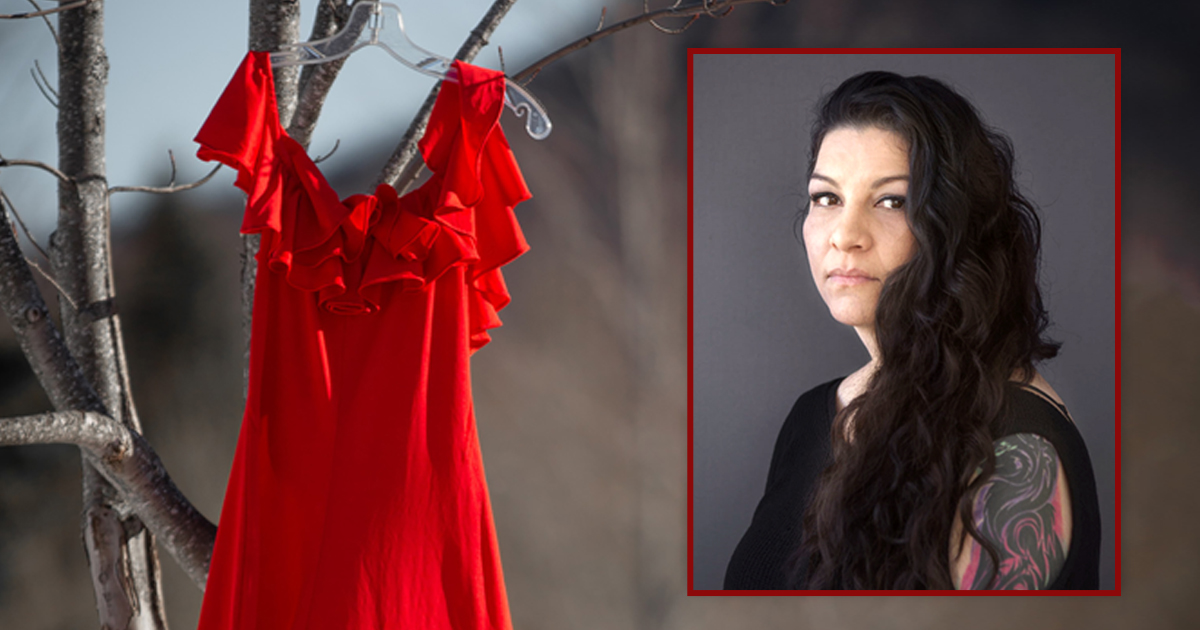A red dress hangs from a local shop window. Dozens of red dresses are scattered throughout a neighbourhood park. A crowd gathers around a sacred fire, holding signs and dressed in red as they begin to march down the street.
Across Turtle Island (North America), red dresses have come to symbolize the thousands of Indigenous women, girls and two-spirit people who have gone missing or been murdered. Red Dress Day, inspired by Métis artist Jaime Black’s REDress Project, is observed on May 5 to honour their lives and bring awareness to this injustice.
Captain Crystal Porter, associate territorial Indigenous ministries consultant and divisional Indigenous ministries consultant in the Prairie Division, spoke with Beatrice Wallace, a lived experience engagement and inclusion specialist with The Salvation Army’s modern slavery and human trafficking response, about her own experience and how people can respond to this ongoing crisis.
Can you share a little about yourself and how you are connected to The Salvation Army?
I am a mother of eight and a kokum (grandmother) to seven, and I live in Regina. I knew of some of the services that The Salvation Army has in my city, but I did not know the extent of the fantastic work being done worldwide. I was told about the job that was available by a friend. I applied to be the lived experience engagement and inclusion specialist in the Prairies and began my employment in June 2022. As a person with lived experience with human trafficking, I believe that I can contribute greatly to The Salvation Army’s modern slavery and human trafficking (MSHT) response. I am proud to be part of an amazing team.
I was recently gifted a copy of your book, Wolf Woman. Can you tell us about the experience of writing your story?
My book, Wolf Woman: A Search for Identity, is my memoir. Ever since I was a little girl, I loved to write. I knew that someday I would write a book, I just did not know when. As an Indigenous woman who has experienced hardships in life—hardships that I know many of my Indigenous sisters have gone through—I wanted to write a book about my life and show that I’m still here, and to tell them that they can get through whatever they are going through. I want to be a beacon of hope.
I also wrote it for people who work in any capacity with those who are hurting and vulnerable, so they could see that we all have a story and maybe would have more understanding and compassion. It was hard to write because I was constantly triggered, but Creator put it on my heart to write and I knew that I would be guided. It took me about two years to complete it.
What are some tangible ways that people connected to The Salvation Army can raise awareness or get involved with the missing and murdered Indigenous women, girls and two-spirit (MMIWG2S) epidemic?
I think we need to first understand our history, and why Indigenous women, girls and two-spirit people are the most vulnerable population to go missing and be murdered. The trauma goes right back to first contact. We need to know about residential schools, the ’60s Scoop and the foster-care system to understand why there is a lack of identity and belonging. We need to understand multigenerational and intergenerational trauma and marginalization in the forms of poverty, insecure housing or homelessness, and barriers to education, employment, health care and cultural support. We need to understand that we are not lost people, that we are strong and resilient. We need to be worked with, not worked for.
What resources (articles, books, videos, etc.) would you recommend for people wanting to learn more about human trafficking and MMIWG2S?
I recommend reading Reclaiming Power and Place, the National Inquiry’s final report, which reveals that the root causes behind the staggering rates of violence against Indigenous women are due to their rights being violated, and because of the abuse they endured as a result of colonial and patriarchal policies that displaced women from their traditional roles, leaving them vulnerable to violence. The report compiled the stories and truths of more than 2,380 family members, survivors of violence, experts and knowledge keepers, shared in cross-country public hearings and evidence gatherings, which I attended. There are 231 individual calls for justice directed at governments, institutions, social-service providers, industries and all Canadians.
I also recommend reading my book. Not all Indigenous women and girls have gone through exactly what I did, but there are many similarities. Understanding this experience brings empathy and, hopefully, change.
Photo: Wirestock Creators/stock.Adobe.com










Leave a Comment